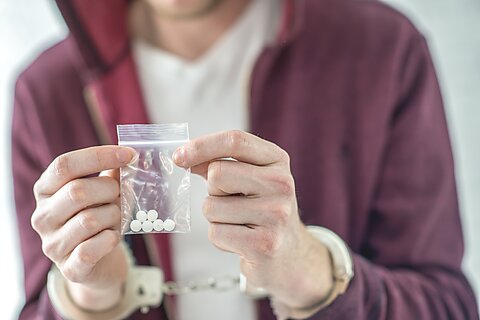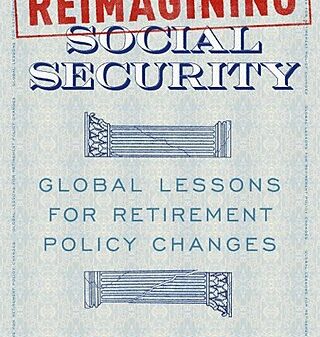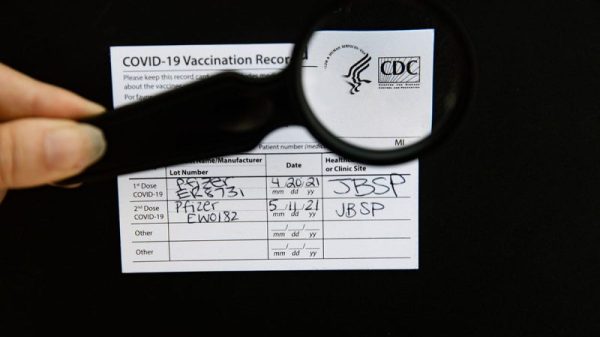
The New York Post recently reported on the tragic deaths, “less than three months apart,” of two Texas friends, ages 21 and 22, who died from overdosing on nitazenes, a type of synthetic opioid more potent than fentanyl. One bought what he thought was Xanax on the underground market, and the other bought what he thought was Percocet (oxycodone plus acetaminophen).
The Post reported that Harris County medical examiners have already seen four cases of nitazene-related overdoses.
Nitazenes can be much more potent than fentanyl and may need several doses of the overdose antidote naloxone to reverse an overdose.
I have been concerned about nitazenes for quite some time. In a 2020 blog post, I asked, “Will Isotonitazene Replace Fentanyl on the Black Market?”:
Reacting to the fact that the synthetic opioid fentanyl and its analogs— largely made and smuggled into the US by labs in China—are responsible for up to 75 percent of opioid-related deaths, the Trump administration persuaded China to impose a ban on the production of fentanyl and its analogs in April 2019. By the fall of 2019, a new synthetic opioid, isotonitazene, made its debut in the US and Canadian black markets. The drug, which is not a derivative of fentanyl but equally as potent, is legal to export from China and is not banned in North America or Europe.
The World Health Organization reported that isotonitazene started appearing in forensic toxicology reports in Belgium, Canada, Estonia, Germany, Latvia, Sweden, the U.K., and the US in early 2019. In a 2022 blog post, I noted that the Tennessee Department of Health reported a fourfold increase in overdoses involving nitazenes from 2019 to 2022.
Nitazenes are made from a completely different precursor than fentanyl. Piperidine is the precursor for fentanyl, but the precursor for nitazenes is benzimidazole, a compound used to produce various useful medicines such as blood pressure pills, antacids, and antifungal agents. The Swiss drugmaker CIBA, now Novartis, developed the first nitazenes as potential pain relievers in the 1950s but never marketed them.
Writing in USA Today in January 2024, Josh Bloom and I warned:
There are two primary reasons that the emergence of nitazenes in the street drug supply is alarming. One is their extreme potency. An analog called etonitazene may be as much as 1,000-fold more potent than morphine. By comparison, fentanyl is only 100 times more powerful than morphine….
The other reason is that nitazenes are different from fentanyl and its derivatives because researchers fairly well understand the range of the potency of numerous circulating fentanyl derivatives; it is unlikely that any new, unknown derivatives will be more dangerous than those already known and can be identified.
However, researchers know little about nitazene derivatives. Scientists don’t understand how modifications to their chemical structure will affect their potency, making nitazenes the “Wild West” of street drugs.
The Harris County toxicology lab identified N‑pyrrolidino protonitazene as the form of nitazene responsible for the deaths of the two young Texas men. The Post article claimed it is 43 times more potent than fentanyl. Like most toxicology labs across the country, the Harris County lab does not routinely test for nitazenes unless they suspect the drug or if no other substances can explain the overdose.
In March 2023, I testified before the House Judiciary Subcommittee on Crime and Government Surveillance, which was considering what later became known as the HALT Fentanyl Act (“Halt All Lethal Trafficking of Fentanyl”). The Act classified new fentanyl analogs as Schedule I drugs and increased penalties and mandatory minimum sentences for possessing or trafficking in these fentanyl derivatives. I told the representatives that the so-called “iron law of prohibition”—the harder the enforcement, the harder the drug—explained fentanyl’s emergence in the illicit drug supply. I warned them about recent evidence of nitazenes appearing in the drug supply.
I also told the subcommittee, “I wouldn’t be surprised if two or three years from now, we are talking about the ‘nitazene crisis’ instead of the fentanyl crisis.”
I went on to say, “If policymakers double down on the same prohibitionist policies they have employed for over 50 years, deaths from illicit drug overdoses will continue to rise. Doing the same thing repeatedly, with even more vigor this time, will not yield a different result.”
I concluded my remarks with, “I urge the Subcommittee to avoid doubling down on policies that will not only fail to stem the flow of illicit fentanyl but will fuel the development of more deadly replacements.”
While the HALT Fentanyl Act did not advance during the 2023–2024 session of Congress, the Senate passed the bill in March of this year, the House passed it in June, and President Trump signed it into law on July 16.
From fentanyl to nitazenes, the pattern is clear: stricter bans don’t eliminate the danger; they just rename it. Unless we change our strategy, more families will experience the heartbreak that those Texas parents are going through now.


















